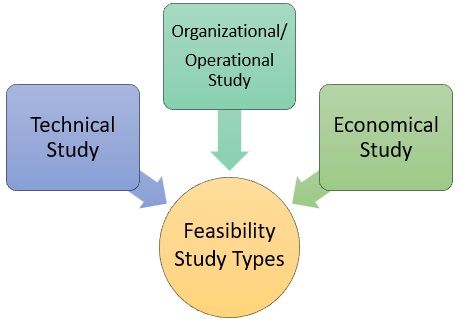A feasibility study specifies whether the proposed software project is practically possible or not. Whenever there arises a need for any software you don’t directly jump in developing the particular software. Instead, we must first analyze certain facts to realize whether the software is worthwhile or not and this is called the feasibility study.
The feasibility study determines whether the software project can be achieved technically, organizationally, economically or not, and there are many other parameters to consider. Well, each organization performs the feasibility study in different ways. Some do it elaboratively and systematically, some might do it in an ad hoc fashion and some may not do it all.
Content: Feasibility Study
Importance of Feasibility Study
The feasibility study is of much more importance if done correctly. If the feasibility study is not done correctly it is of no use. Key points to determine the importance of feasibility study are:

- It prevents you from committing, investing your resources and capital for an impractical project.
- It might discover new ideas that might completely change the scope of your software.
- Improves the confidence of the team to concentrate on their project.
- Validate the need for the software.
- Estimates the risk involved in developing the software and analyzed if they can be minimized.
Types of Feasibility Study
There are three components of feasibility study i.e technical, organizational and economical. We have discussed each type in the section below:
 1. Technical Feasibility
1. Technical Feasibility
The technical feasibility study determines whether the current technology and technical staff available with the organization will accomplish the software’s development or not. The key issues that must be addressed during the technical feasibility study are as follow:
- Does the technical team available has knowledge to analyze, design, code for software? And they must also be able to install, operate and maintain the software.
- Can the proposed software meet the user’s requirement?
- Technology is getting advanced with each passing day so the developed software product must sustain with the advancing technology in the future.
- Do we have the approved and accepted tools and equipment’s to develop the software?
- Examine the complexity of the software project. A project with higher complexity must be provided with a high degree of technical skills and experience.
2. Organizational Feasibility
Though the software project is feasible from the technical aspect what if you need to make major organizational changes. It will make things more complex. To check if the software is organizationally or operationally feasible or not we must consider the following key points:
- Identify whether the organizational staff is ready to accept the new software or not
- Is the organizational staff technical sound to cope up with new technologies?
- Does the organization hardware infrastructure capable to support the new software?
Now, if the new software gets the staffs acceptance then it is more like that the software will be successful. If the organization has to make more changes in its policies, structures and standers then the software’s failure risk gets increased. Apart from the above considerations, there are some more analyses as discussed below:
- Competition: Before we start developing the software we must consider the current trends of the market and the competitive software available in the market. This will help in the development of the software.
- Uniqueness: Though there are several competitor software available in the market the newly developed software must be known for its uniqueness. It must offer something that the existing software in the market doesn’t offer.
- Performance: The performance of the software needs to be traced to whether it is performing financially and technically well corresponding to its requirement.
3. Economical Feasibility
For software to be economically feasible the cost expends to develop the software must exceed its benefits. The cost expends to develop a software includes:
- An overall analysis of the system and its design.
- Hardware purchased to develop the software
- Software required in the development of the software.
- Training required for the organization personals.
- Cost invested in Installation of the software.
- The cost required in operating the software
Now the benefits of the developed software must outweigh the cost required to develop the software. Some benefits can not be measured such as:
- Benefits of reduced labour cost.
- Benefits of faster processing.
- Benefits of improved customer service.
- Benefits of reduced errors.
Benefits of Feasibility Study
A feasibility study gets you a clear-cut idea of whether the software will be a success even before you invest in the software.
- It increases the focus of the software development team.
- The software developer team may come across new opportunities.
- Confirms the developer team whether to accept the software project or not.
- Helps in evaluating the success rate of the software.
So, this is all about the feasibility study. We have learned about the feasibility study, in brief, we have also discussed its importance. Then we have discussed the types of components of the feasibility study. We have concluded our discussion with its benefits.

Leave a Reply